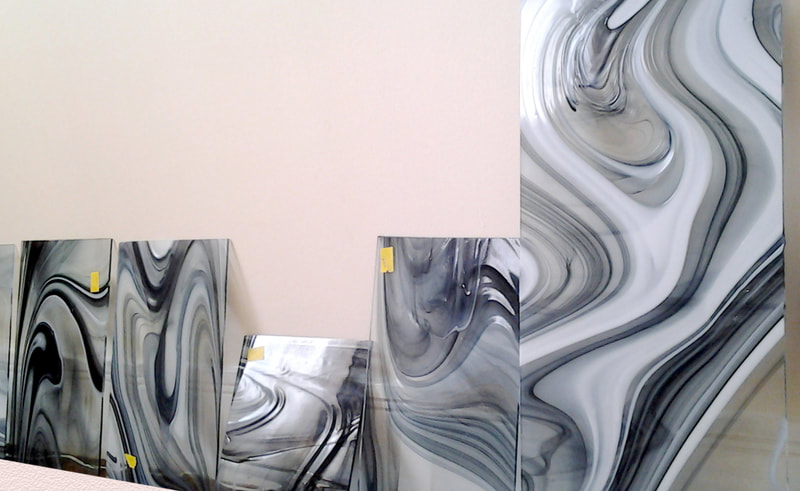Cher Ami
To finalize my master's thesis, I created a memorial stained-glass sculpture, devoted to all victims of wars, which depicted Cher Ami, the only pigeon soldier awarded the Dickin medal for bravery. In moving forward from my use of negatives, I found glass to be the closest material, resembling transparent qualities of the negatives; glass was also more rigid and therefore easier to install. This particular glass was imported from Oregon in the United States. In the final installation, Cher Ami became transcendent, a representation of the Holy Spirit, often depicted in stained glass as a dove, over the past millennium. The overall design of the sculpture was inspired by 'bird symbolism', illustrated in Inuit and other indigenous cultures. The glass was held by two stiles and one rail, the top rail was omitted to symbolize freedom and our ability to escape the past.
Ideas, Design & the Crafting Process
In addition to conducting archival research at the War Museum in London and the British Archives, I also dedicated several weeks to exploring the works of other artists and their sources of inspiration. As I discovered, artistic inspiration can originate from various sources and experiences. For example, the textures, colors, and shapes found in nature, such as rocks, foliage, animals, and clouds, can serve as inspiration for artists. Furthermore, an artist's own personal history, which may include childhood memories, travels, relationships, and significant life events, can also have an impact on their creative process. Additionally, abstract concepts, such as emotions, ideas, and philosophies, can provide inspiration to artists exploring themes such as love, loss, identity, and social justice, using their own observations and experiences of the world.
With my love for Inuit art, I looked into the works of Kenojuak Ashevak (above) who was a Canadian Inuit artist known for her remarkable contribution to the development of modern Inuit art. She was born in Ikerrasak camp, located on the southern coast of Baffin Island, in the Canadian Arctic territory of Nunavut and began her artistic career in the 1950s, when she started producing drawings and prints for the Kinngait (formerly Cape Dorset) printmaking studio. Her work was quickly recognized for its unique style and expressive use of color. She is best known for her prints of Arctic animals and birds, as well as for her depictions of Inuit legends and stories.
























